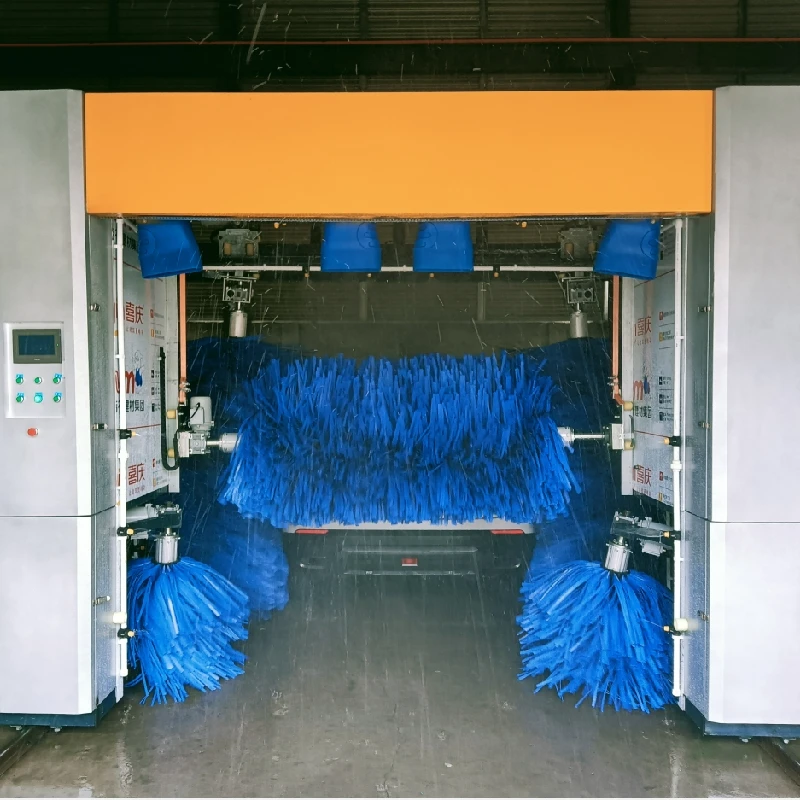2 月 . 16, 2025 09:42
Back to list
Automatic Car Wash Machine/ Rolling Car Washing Machine/ Gantry Car Washing Machine/ Reciprocating Car Washing Machine
Maintaining your vehicle's engine is not only crucial for its longevity but is also a statement of personal pride in vehicle ownership. Among the myriad of cleaning methods available today, using a pressure washer stands out due to its efficiency and effectiveness. However, this method requires precision, expertise, and care to avoid damaging sensitive engine components.
Once the degreaser has done its job, it’s time for the final rinse. Maintain a safe distance of at least 2-3 feet while using the pressure washer on the engine. This approach ensures effective dirt removal without posing a threat to delicate engine parts. An advanced tip is to employ an air compressor or leaf blower post-rinsing to dry the engine quickly and efficiently, preventing water from sitting in crevices. Completing a detailed engine cleaning with a pressure washer doesn't just result in a visually appealing engine bay; it elevates vehicle performance. A clean engine runs cooler and more efficiently. Additionally, regular cleaning aids in spotting potential issues like leaks or worn-out hoses, facilitating preemptive repairs. Of course, another component of engine care and cleaning relates to the environmental impact. Dispose of or clean any materials with residues—like plastics or cloths—according to your local waste management rules to prevent pollution. Awareness of both vehicle maintenance and ecological responsibility can stand to gain respect in the community of automotive enthusiasts. Pressure washing a car engine with precision and care not only enhances the car's functionality but sets a high standard for maintenance. The steps discussed contribute to a wise investment in both time and effort, ensuring your vehicle's peak performance while simultaneously proving to be a testament of your dedication to its care. The sense of mastery and the authoritative knowledge displayed in this maintenance strategy highlights the trustworthiness and expertise needed for top-tier vehicle upkeep.


Once the degreaser has done its job, it’s time for the final rinse. Maintain a safe distance of at least 2-3 feet while using the pressure washer on the engine. This approach ensures effective dirt removal without posing a threat to delicate engine parts. An advanced tip is to employ an air compressor or leaf blower post-rinsing to dry the engine quickly and efficiently, preventing water from sitting in crevices. Completing a detailed engine cleaning with a pressure washer doesn't just result in a visually appealing engine bay; it elevates vehicle performance. A clean engine runs cooler and more efficiently. Additionally, regular cleaning aids in spotting potential issues like leaks or worn-out hoses, facilitating preemptive repairs. Of course, another component of engine care and cleaning relates to the environmental impact. Dispose of or clean any materials with residues—like plastics or cloths—according to your local waste management rules to prevent pollution. Awareness of both vehicle maintenance and ecological responsibility can stand to gain respect in the community of automotive enthusiasts. Pressure washing a car engine with precision and care not only enhances the car's functionality but sets a high standard for maintenance. The steps discussed contribute to a wise investment in both time and effort, ensuring your vehicle's peak performance while simultaneously proving to be a testament of your dedication to its care. The sense of mastery and the authoritative knowledge displayed in this maintenance strategy highlights the trustworthiness and expertise needed for top-tier vehicle upkeep.
Related PRODUCTS




